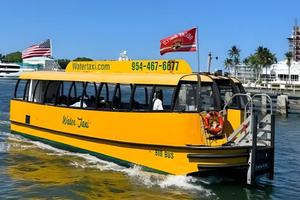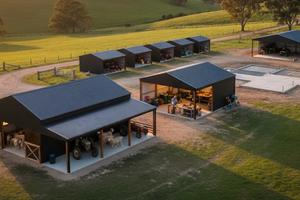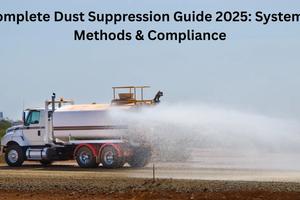Travel Nurse Salary & Career Guide - From Average Travel Nurse Salary Expectations to Requirements

Key Takeaways
Essential insights to remember
Travel nurses can earn significantly higher salaries compared to staff nurses, with comprehensive benefits and housing stipends
Requirements include a minimum of 1-2 years of clinical experience, active RN license, and relevant certifications
Successful travel nursing requires adaptability, strong clinical skills, and understanding of contract terms
Travel nursing offers unique opportunities for professional growth, higher income, and lifestyle flexibility
Introduction 🏥
The Rise of Travel Nursing in Modern Healthcare
The landscape of nursing has undergone a remarkable metamorphosis, with travel nursing emerging as one of the most dynamic and lucrative career paths in healthcare. As healthcare facilities across the globe grapple with staffing shortages and increasing patient demands, travel nurses have become the cornerstone of flexible healthcare staffing solutions.
What Defines a Travel Nurse? 🌟
““"Travel nursing represents the perfect amalgamation of adventure and purpose, allowing healthcare professionals to make a difference while exploring new horizons."
A travel nurse is a qualified healthcare professional who works temporary assignments in various healthcare settings, typically ranging from 8 to 26 weeks. These peripatetic caregivers bring their expertise to different facilities, filling critical staffing gaps while gaining diverse clinical experience.
The Evolution of Travel Nursing 📈
The concept of travel nursing has evolved significantly since its inception in the 1970s. In today's healthcare landscape, these professionals serve as:
- Crisis Response Teams: Providing essential support during natural disasters, pandemics, and other healthcare emergencies
- Specialty Care Providers: Offering expertise in high-demand specialties like ICU, ER, and Labor & Delivery
- Seasonal Support Staff: Meeting fluctuating patient demands in tourist destinations and seasonal locations
- Rural Healthcare Solutions: Bringing critical care capabilities to underserved communities
Industry Impact and Growth 🚀
The travel nursing sector has witnessed unprecedented growth, with the market size expanding exponentially. This growth is driven by several factors:
- Aging population demographics
- Increasing healthcare accessibility
- Regional staffing shortages
- Healthcare facility expansions
- Technological advancements in healthcare delivery
Understanding Travel Nurse Compensation 💰
Breaking Down the Compensation Package
In the realm of healthcare careers, travel nursing stands out as one of the most financially rewarding paths. The compensation structure is multifaceted, encompassing far more than just a base salary.
Regional Pay Variations 🗺️
““"Location plays a pivotal role in travel nursing compensation, with certain regions offering substantially higher rates due to cost of living and demand dynamics."
High-Paying Regions and Their Characteristics
- California: Leading the nation in travel nurse compensation
- Stringent nurse-to-patient ratios
- High cost of living adjustments
- Strong union presence
- Northeast Corridor: Premium rates in major metropolitan areas
- Dense population centers
- High concentration of teaching hospitals
- Competitive healthcare market
- Alaska and Hawaii: Unique geographical premiums
- Remote location bonuses
- Higher cost of living adjustments
- Seasonal demand fluctuations
Additional Financial Incentives ⭐
- Completion Bonuses
- End-of-contract rewards
- Extension incentives
- Performance-based bonuses
- Travel Reimbursements
- Transportation costs
- License reimbursement
- Certification renewals
- Specialty Differentials
- Critical care premiums
- Advanced certification bonuses
- Night shift differentials
Tax Considerations and Strategy 📝
The strategic management of travel nursing income requires careful attention to tax implications:
- Tax-Free Stipends: Understanding qualification requirements
- Multiple State Income: Managing state tax obligations
- Deductions: Tracking work-related expenses
- Home Base: Maintaining tax home status
Qualifications and Requirements 📚
Educational Prerequisites 🎓
The journey to becoming a travel nurse begins with a solid educational foundation. The academic requirements have evolved to meet the increasing complexities of modern healthcare.
Licensing Requirements and Compliance 📋
““"A robust understanding of licensing requirements is crucial for travel nurses as they navigate multiple state jurisdictions."
State Licensing Considerations
- Compact State Licensing
- Multi-state practice privileges
- Enhanced mobility options
- Streamlined compliance
- Non-Compact State Requirements
- Individual state applications
- Variable processing times
- Specific state requirements
Required Certifications 🏆
Core Certifications
- Basic Life Support (BLS)
- Renewal: Every 2 years
- Provider: American Heart Association
- Universal requirement
- Advanced Cardiac Life Support (ACLS)
- Renewal: Every 2 years
- Required for critical care
- Standard for most hospitals
- Specialty Certifications
- Unit-specific requirements
- Enhanced job opportunities
- Higher compensation potential
Essential Skills and Competencies 🎯
Technical Proficiencies
- EMR Systems: Epic, Cerner, Meditech
- Medical Devices: Infusion pumps, monitors
- Documentation: Charting, care planning
Soft Skills
- Adaptability: Quick environment integration
- Communication: Clear, effective interaction
- Cultural Competency: Diverse patient populations
- Time Management: Efficient care delivery
- Leadership skills in nursing
Steps to Become a Travel Nurse 🛤️
Educational Pathway Planning 📘
The journey to travel nursing begins with strategic educational planning and certification acquisition. Understanding the optimal path can save both time and resources.
Gaining Initial Experience 🏥
““"The foundation of a successful travel nursing career is built on solid clinical experience and diverse patient care exposure."
Strategic Experience Building
- Choose the Right First Position
- High-volume facilities
- Diverse patient populations
- Strong preceptor programs
- Technology-forward environments
- Develop Core Competencies
- Time management skills
- Critical thinking abilities
- Emergency response capabilities
- Documentation proficiency
Finding the Right Agency 🤝
Agency Selection Criteria
- Reputation and Reviews
- Industry standing
- Nurse testimonials
- Online ratings
- Professional associations
- Benefits Package
- Comprehensive insurance
- Retirement options
- Professional development
- Travel reimbursement
- Contract Terms
- Assignment variety
- Geographic coverage
- Cancellation policies
- Extension opportunities
Preparation Checklist ✅
Essential Documentation
- Professional Portfolio
- Updated resume
- Skills checklist
- Reference letters
- Certification copies
- Compliance Documents
- Immunization records
- Background checks
- Drug screening results
- Physical examination
- State-Specific Requirements
- License applications
- CEU documentation
- Specialty certifications
- Compact license status
Life as a Travel Nurse 🌎
Contract Lengths and Assignments 📋
Understanding the various contract types and assignment structures is crucial for successful travel nursing career planning.
Work Schedules and Flexibility ⏰
““"Travel nursing offers unique scheduling opportunities that can be tailored to individual lifestyle preferences and professional goals."
Common Schedule Patterns
- Traditional Shifts
- 12-hour day/night rotations
- Three shifts per week baseline
- Optional overtime availability
- Self-scheduling opportunities
- Alternative Arrangements
- Block scheduling
- Weekend programs
- Float pool positions
- Per diem options
Housing Arrangements 🏠
Housing Options Analysis
- Agency-Provided Housing
- Furnished accommodations
- Utility inclusion
- Location convenience
- Maintenance support
- Housing Stipend
- Market-based rates
- Personal preference flexibility
- Tax advantages
- Location control
Adapting to New Environments 🌟
Professional Integration Strategies
- First Week Success
- Facility orientation completion
- Policy/procedure review
- Equipment familiarization
- Team introduction
- Cultural Adaptation
- Unit culture observation
- Communication style adjustment
- Workflow integration
- Relationship building
Career Development and Specializations 📈
Popular Specialties in Travel Nursing 🌟
Travel nursing offers diverse specialization opportunities, each with unique challenges and rewards.
Advanced Practice Opportunities 👨⚕️
““"The evolution from travel nurse to advanced practice provider represents a natural progression for many career-focused professionals."
Advanced Role Pathways
- Nurse Practitioner Tracks
- Family Practice
- Acute Care
- Pediatrics
- Women's Health
- Clinical Specialist Roles
- Education
- Research
- Quality Improvement
- Leadership
Career Progression Paths 🎯
Strategic Career Planning
- Early Career (1-3 years)
- Core competency development
- Specialty certification acquisition
- Network building
- Agency relationship establishment
- Mid Career (4-7 years)
- Advanced certifications
- Leadership opportunities
- Mentoring roles
- Specialty diversification
- Advanced Career (8+ years)
- Educational advancement
- Consulting opportunities
- Program development
- Industry leadership
Continuing Education 📚
Professional Development Opportunities
- Formal Education
- Advanced degrees
- Specialty certifications
- Clinical workshops
- Leadership programs
- Informal Learning
- Peer mentoring
- Online resources
- Professional associations
- Industry conferences
Practical Considerations 💡
Contract Negotiation Tips 📝
Understanding how to negotiate travel nursing contracts effectively can significantly impact both compensation and job satisfaction.
Housing Solutions 🏠
““"Strategic housing decisions can significantly impact both financial outcomes and quality of life during travel assignments."
Housing Strategy Framework
- Pre-Assignment Research
- Local market analysis
- Neighborhood safety
- Commute considerations
- Cost of living assessment
- Housing Options Evaluation
- Agency-provided housing
- Private rental markets
- Extended stay facilities
- Short-term leases
Insurance and Benefits Coverage 🏥
Comprehensive Benefits Management
- Health Insurance
- Coverage options
- Network considerations
- Gap coverage strategies
- Supplemental insurance
- Professional Liability
- Coverage limits
- Additional protection
- Claims history impact
- State requirements
Managing Finances 💰
Financial Planning Strategies
- Income Management
- Tax planning
- Retirement contributions
- Emergency fund building
- Investment strategy
- Expense Tracking
- Housing costs
- Travel expenses
- Professional fees
- Living expenses
Conclusion 🎯
Future of Travel Nursing 🚀
The landscape of travel nursing continues to evolve, shaped by technological advances, healthcare reforms, and changing demographic needs.
Career Outlook 📈
““"The future of travel nursing presents unprecedented opportunities for those willing to embrace change and continue their professional development."
Key Growth Indicators
- Market Expansion
- Growing healthcare demands
- Aging population needs
- Rural healthcare initiatives
- Global opportunities
- Professional Evolution
- Advanced practice roles
- Specialized certifications
- Leadership opportunities
- Educational advancement





